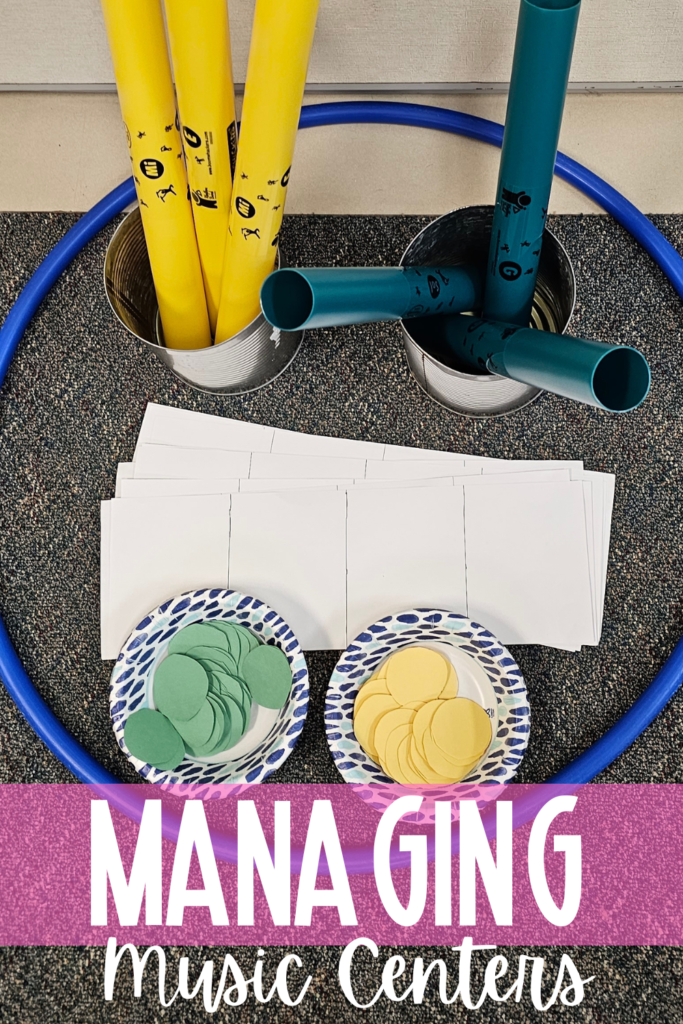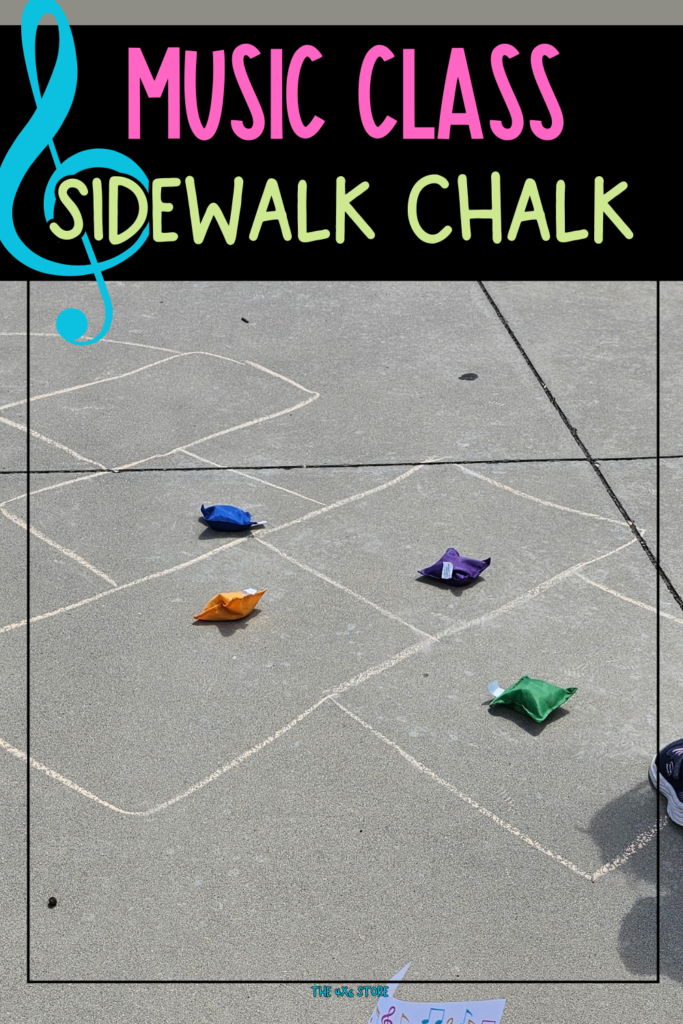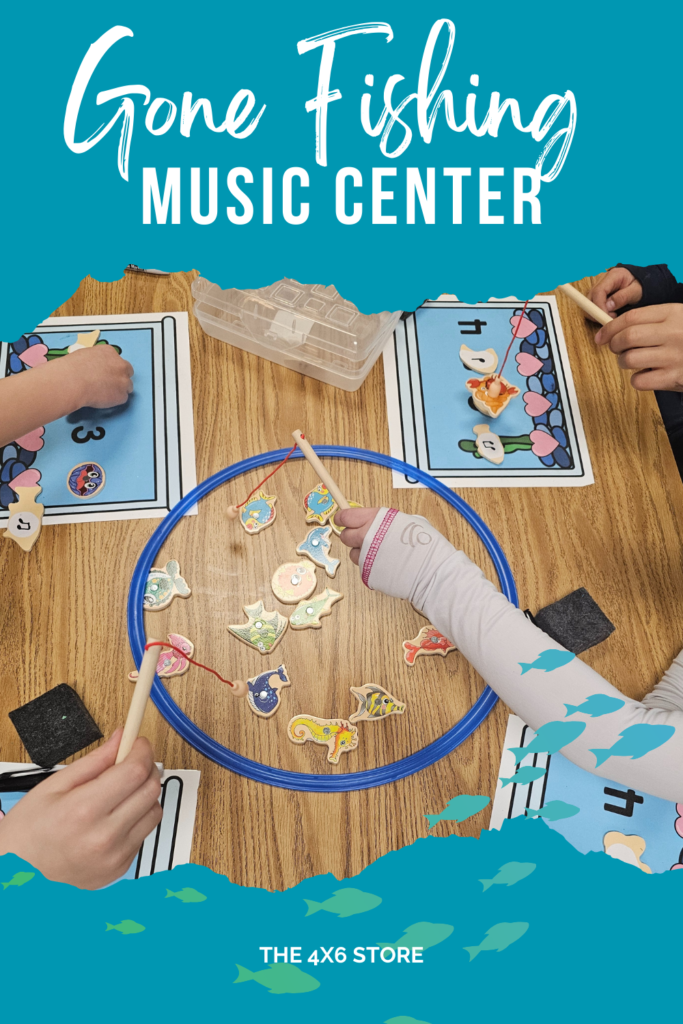Kindergarten Music Centers
I took on something this week I haven’t been brave enough to do in kindergarten yet this year. And I did it the week of my evaluation. (Call me crazy.) But I put together kindergarten music centers! And it was a RAGING success! I just had to drop in and share! I hope you find it helpful – and I hope to add more ideas as I implement centers more frequently!
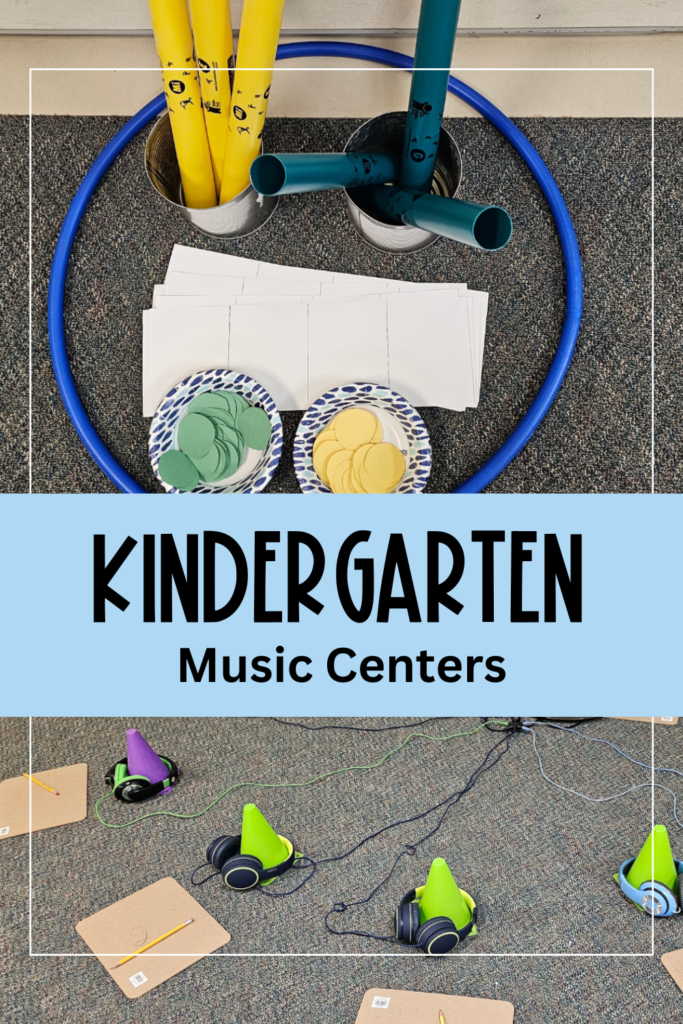
As an Amazon Associate I earn from qualifying purchases at no extra cost to you! All affiliate links will be marked with an *.
Listening Station

This station was the favorite station for a majority of my kindergarten classes! I had done listening activities with them before, but never without a nudge as to what the music may be alluding to. (Such as suggesting an animal for Carnival of the Animals.) All I did this time was set up the listening station, give them a pencil and paper, and told them to draw what they heard.
I put on Swan Lake and had pictures of ballerinas, penguins, zebras with their babies… dancing butterflies. I LOVED IT! And so did they!
Using the cones as containment for the headphones was a stroke of inspiration I had after detangling headphones after three classes. Learn from my rookie mistake. 🙂
(I used this 6-way headphone splitter* before being given a 10-way splitter box!)

Rhythm Kaboom


Rhythm Kaboom quickly became the most requested center with my students!
The rules are fairly simple:
One at a time, students will draw the top rhythm card off the top of the pile. They will clap (or play) the given rhythm. Students who are not taking a turn act as “checkers and helpers.” If the student claps the correct rhythm, the rest of the group gives them a thumbs up. However, if the rhythm is played wrong, the rest of the group become “helpers” and claps the rhythm for the student.
If the rhythm is played correctly, the student may keep the card. The next person then takes a turn.
If a “Kaboom” card is draw, all of that student’s cards are placed face down onto the bottom of the pile.

Boomwhacker Composition

The success of this center blew me out of the water! (Click here to seem more about this center!) What made it so unique is that each students was able to work at their own level without much direction from me. We had learned as a class about making “sol-me songs” using high (green) and low (yellow) Boomwhackers*. Beyond modeling how to use the mats and dots and sticking to one or two sounds per beat, I gave very little instruction.
What happened surprised me! Anticipating mostly quarter note “high-low-high-low” or other seemingly simple rhythms, students began adding eighth notes themselves! (Some direction about placement next to the other was then given.) One student even experimented with playing a quarter note with the yellow boomwhacker while playing eighths with the green. Some added rests. Others experimented with chords! It was utterly fantastic! This center made me realize I need to give my students more opportunities to just EXPLORE!
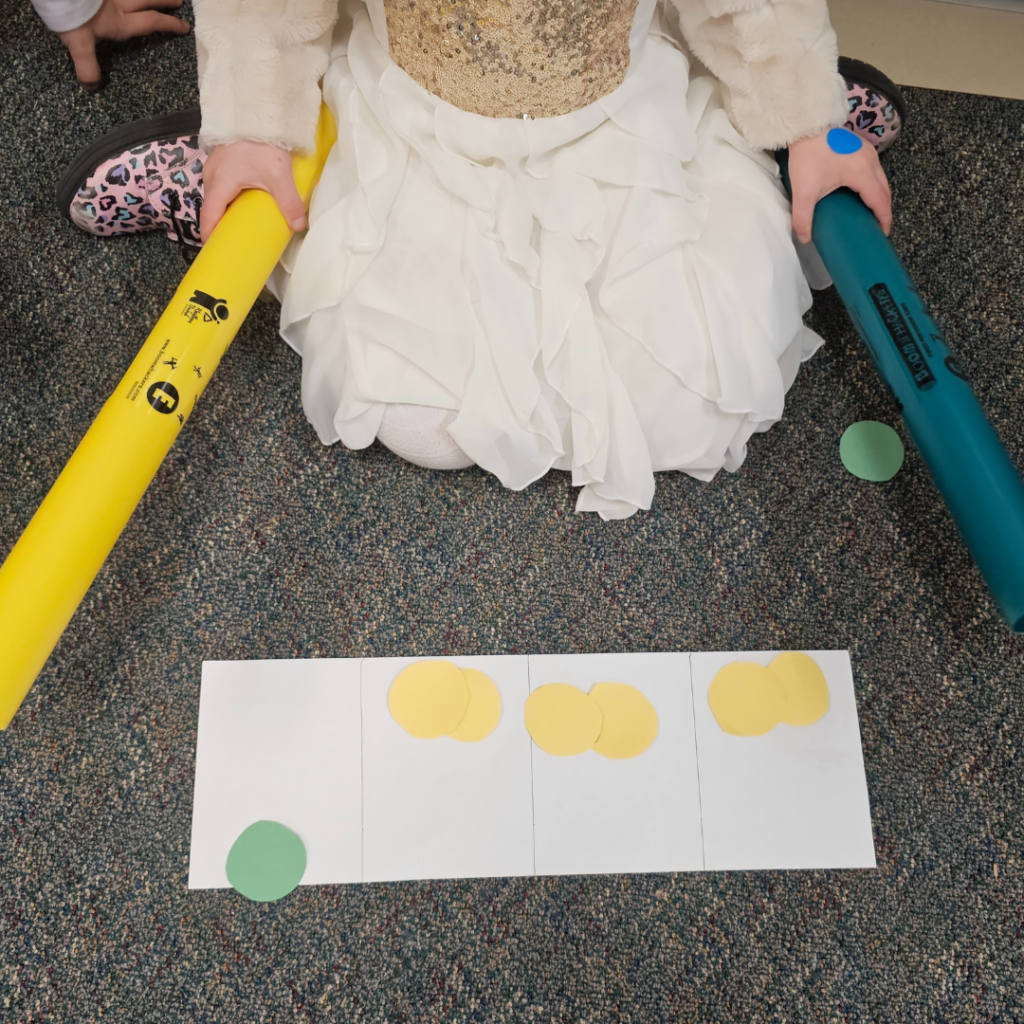
Iconic Notation Composition and Playing

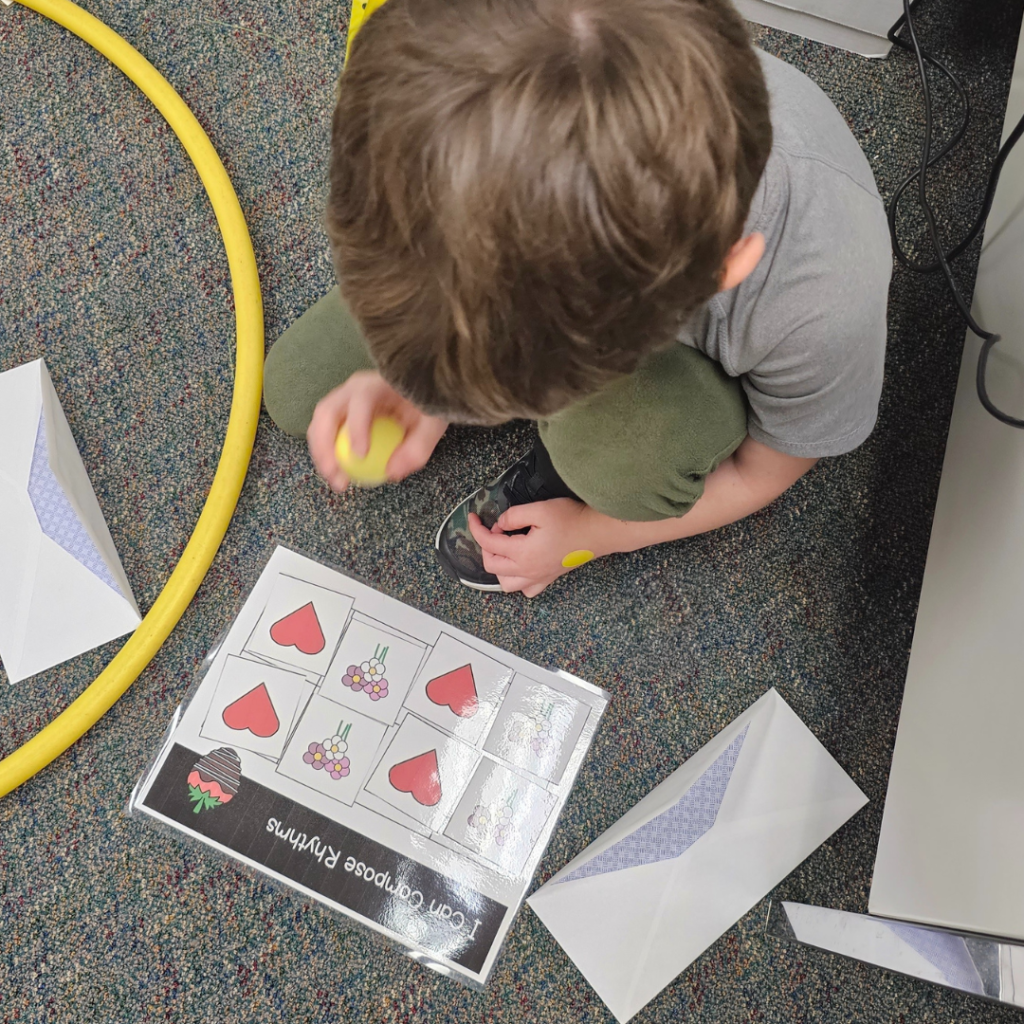
For this center, I used holiday themed iconic notation rhythm mats. My students are very familiar with using syllables to produce rhythms – so this is something they could complete independently. They had done this activity before in small groups, so it required little supervision. Egg shakers* are a favorite (and knew they would be quieter than sticks!)
I anticipated the icons to be “too easy” for some of my higher achieving students, so I also printed off pieces with stick notation for those I noticed were ready. These envelopes were kept on my desk and only handed them out as needed. I also challenged them to make rhythms for their classmates to play!

Fine Motor Play Dough Center
Here me out! This kindergarten center is both manageable and useful! Using play dough is an excellent way for children to develop their fine motor skills while having fun. As they roll, pinch, squeeze, and shape the dough, they strengthen the small muscles in their hands, fingers, and wrists. These actions are essential for tasks requiring precision, such as writing, cutting, or playing instruments. The inherent nature of play dough also encourages kids to experiment with their grip and finger movements.
Setting clear expectations for this center is a MUST! I also don’t usually pull it out until after Christmas.
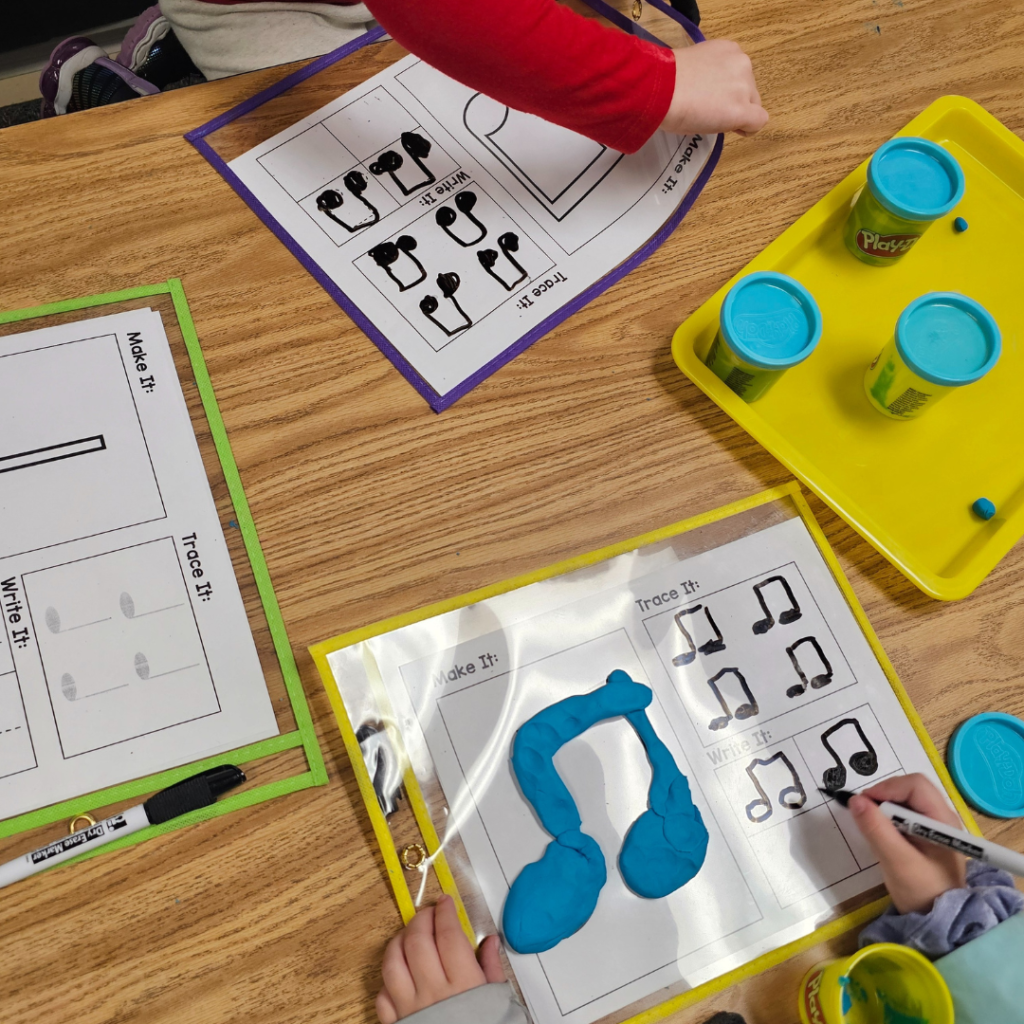

Rhythm Fishing
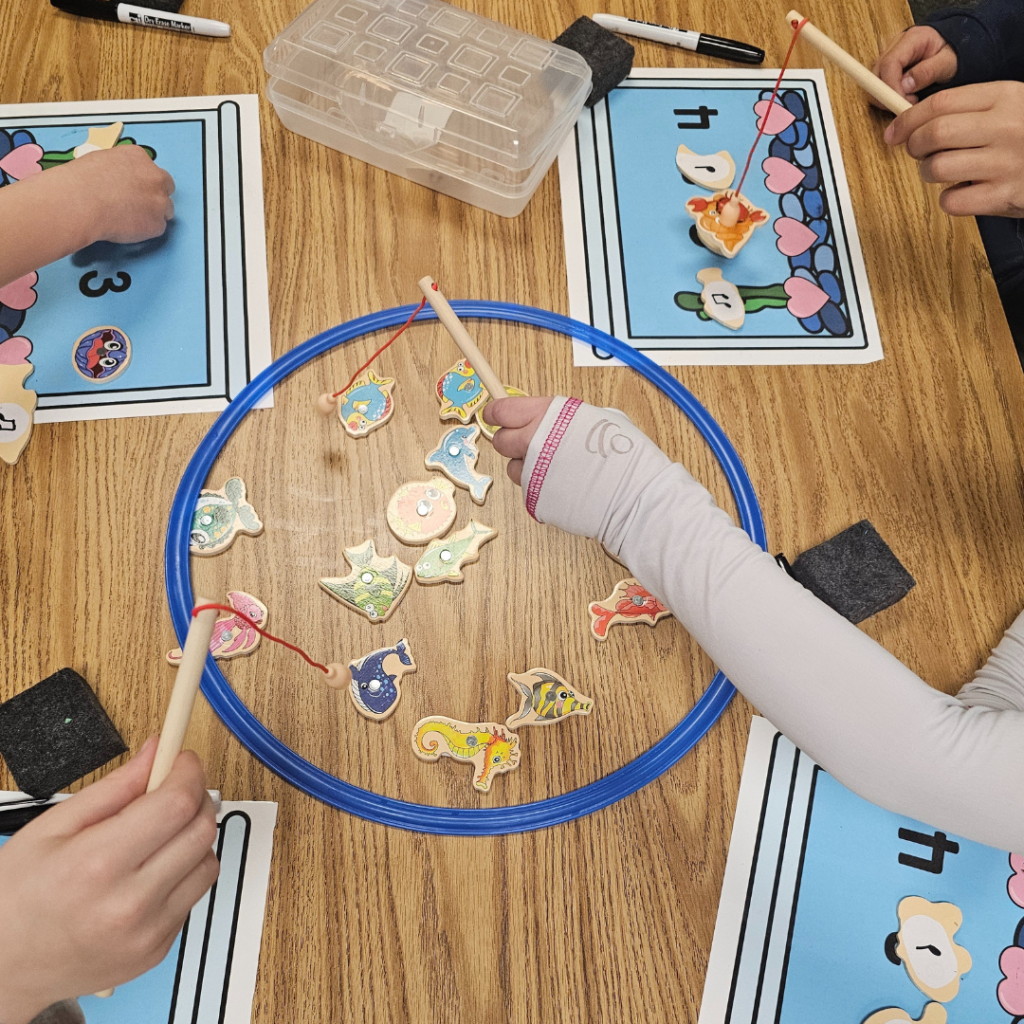
In this center, students will practice clapping and/or writing the notation for different rhythms.
Before doing this center, students should have been introduced to the musical symbols you choose to use, how to place one symbol (like quarter and a pair of eighth notes) to one heart (or beat), practice clapping rhythms, and at least exposure to writing musical symbols.
This center is easily adaptable for different rhythms and grade levels. Read the full post here.
Instrument Exploration

I had a student tell me I was “too bossy” on how we played the instruments. While the delivery was maybe lacking, the sentiment was understood!
I think free-play and discovery are important! I set up a station with a few different types of instruments. Zero strings attached to what they were supposed to play or do. The only rules were how to treat the instruments and how to share.
They. had. so. much. fun.
My favorite moment was when a group of kids got together and started counting off “1. 2. 1-2-3-go!” and proceeded to rock out!
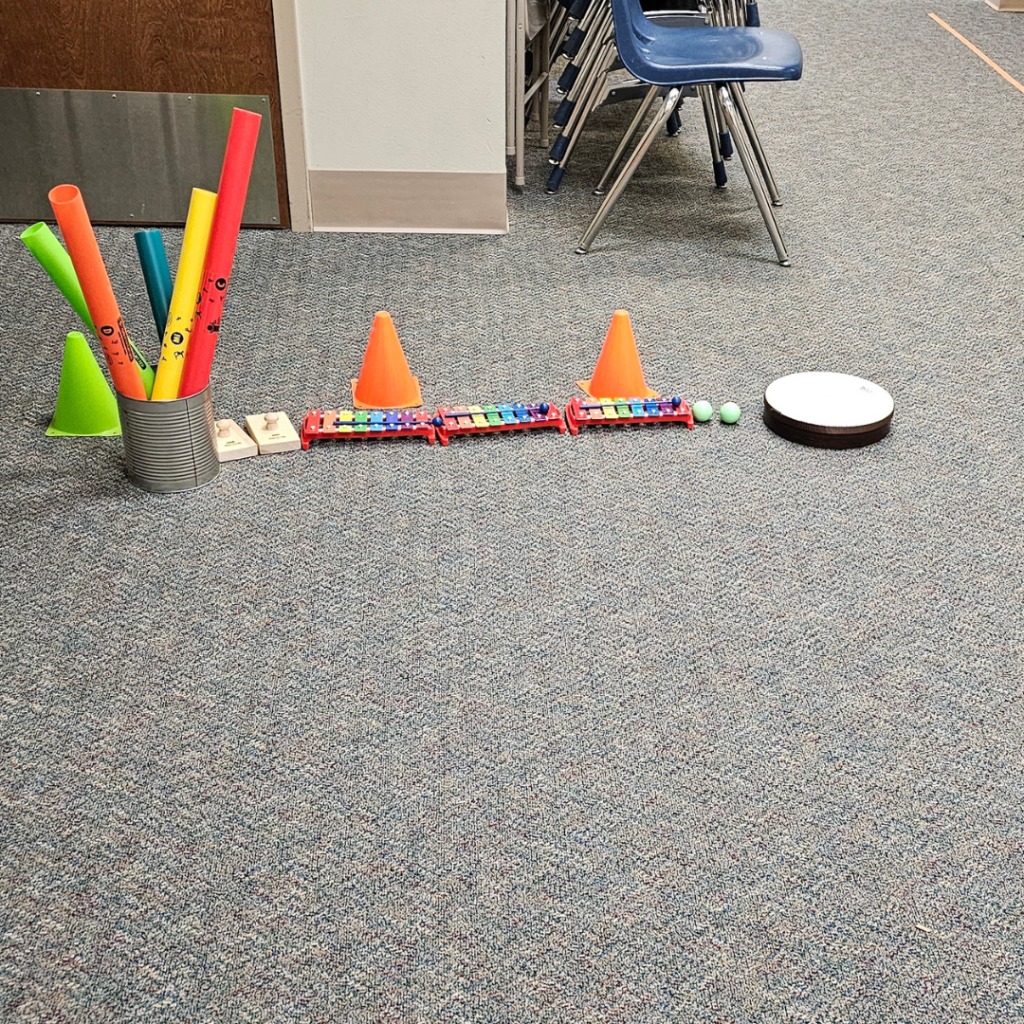

Literacy Station

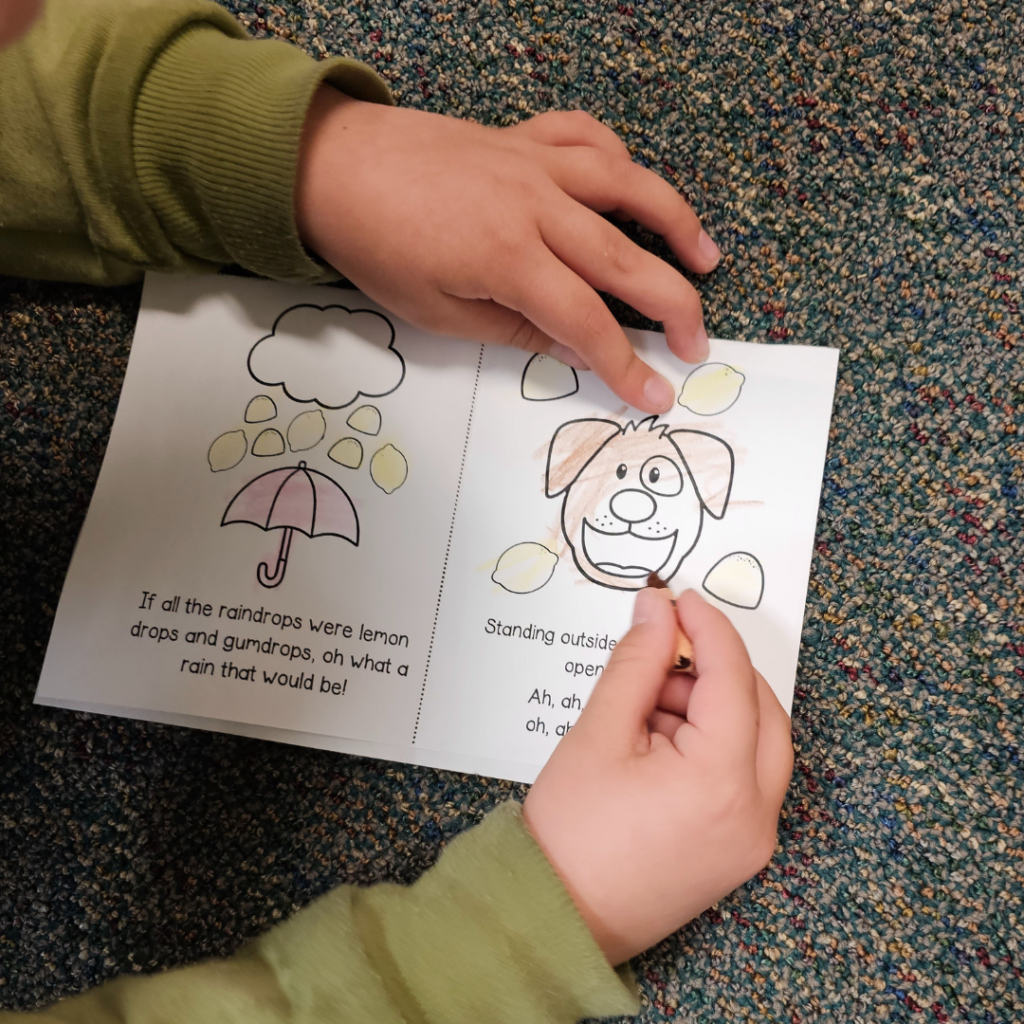
I took the song we had been learning and turned it into a mini foldable book!
During this center, they just colored and assembled the book. For those that finished quickly, they were to sing the song quietly – following the words or pictures. Their “homework” was to take their stories/songs back to their grownups and sing it!
Let me know if you try any of these in your music classroom! I would love to hear how it goes!

